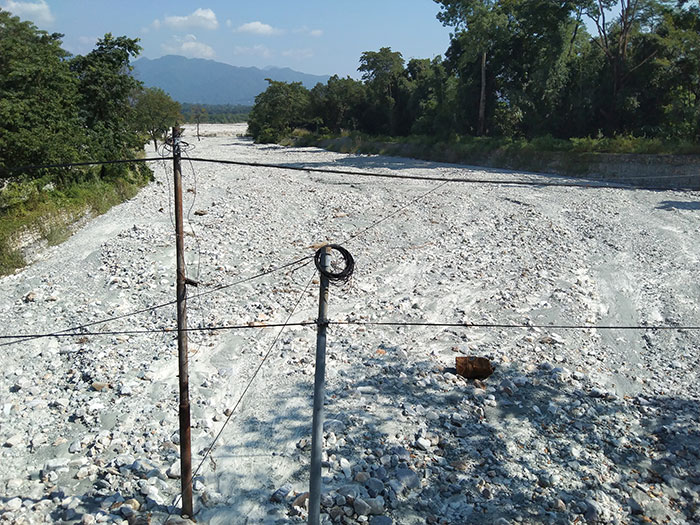Nima | Gelephu
Almost two years since dredging and surface collection began along Shetikhari stream in Gelephu gewog, those living nearby were left exposed to the threats of flooding.
There are no mitigation measures in place to date except for seasonal dredging and emergency excavation when settlement nearby gets flooded.
Dredging for three kilometres at Shetikhari is contracted to two different private companies.
Most of it is carried out by KN Construction Private Ltd and the rest by NRDCL.
The construction of walls at critical points remain incomplete.
Gelephu gup, Ugyen Wangchuk said that it was discouraging to see farmers lose their fields to flash floods during monsoon. The gewog is hoping to see mitigation works in place before the start of the next monsoon.
“We need to secure the lives and public properties located alongside the stream. Dredging at the upper part of the river was done properly. But, the dredged area at the lower part gets filled within 30 minutes, causing a flood,” he said.
Surface collection and dredging works along the Shetikhari stream was divided into two parts. The first stretch, starting from Zomlingthang was allotted to KN Construction Private Ltd in 2019.
NRDCL had allotted dredging works along the remaining stretch to other contractors.
KN Construction Private Ltd was required to build 100 metres of protection wall every year in the critical areas, dredge, and build a motorable bridge connecting Zomlingthang, Pemathang, and Pelrithang, according to the gup.
The company had built a motorable bridge and also carried out dredging for at least three times a year as per the agreement. This saved millions of money the gewog administration had to spend for dredging works.
The proprietor of the KN Private construction Ltd, Karma Nidup said that building a protection wall along the critical areas could not be done so far. “But, other mitigation activities were carried out as per the agreement,” he said.
He added that NRDCL should help build protection walls at the site like it was done in the remaining parts of the stretch. “I had been paying over Nu 2,000 per truck (10-wheeler) for the river bed materials (RBM) collected from the site. It would mutually benefit the gewog, government, and me,” Karma Nidup said.
He added that his crushing unit had been running in loss to date. “Almost 70 percent of RBM collected are waste. I have to pay over Nu 700 per truck to use that waste material,” he said.
At a consultative meeting held in Gelephu gewog last week, an official from NRDCL said that the construction firm was allowed to collect RBM from the site at a lower rate compared to those collected from other river beds.
“There were mitigation works like dredging, building approach roads and other work to be done at the site,” said the official.
A private exporter had to pay Nu 2,290 for six wheelers while the cost of materials collected from the Shetikhari Khola for 10 wheelers was Nu 2,022.
He added that it would be difficult for other crushing units to sell their aggregates if the cost of materials at Shetikhari is reduced further. There is a need to ensure a fair market rate and control market rate fluctuations, according to the official.
Manager with NRDCL Choney Dorji said that the organisation was not consulted when the dzongkhag issued approval to set up a crushing unit at Shetikhari.
“This is not related to dredging. We have separate terms of agreement with the contractor when it comes to dredging at Shetikhari,” he said.
The official added that all mitigation works were carried out at the site to date. NRDCL in consultation with the gewog administration had constructed a 150-metre protection wall at a critical area below the Gelephu-Trongsa highway.


